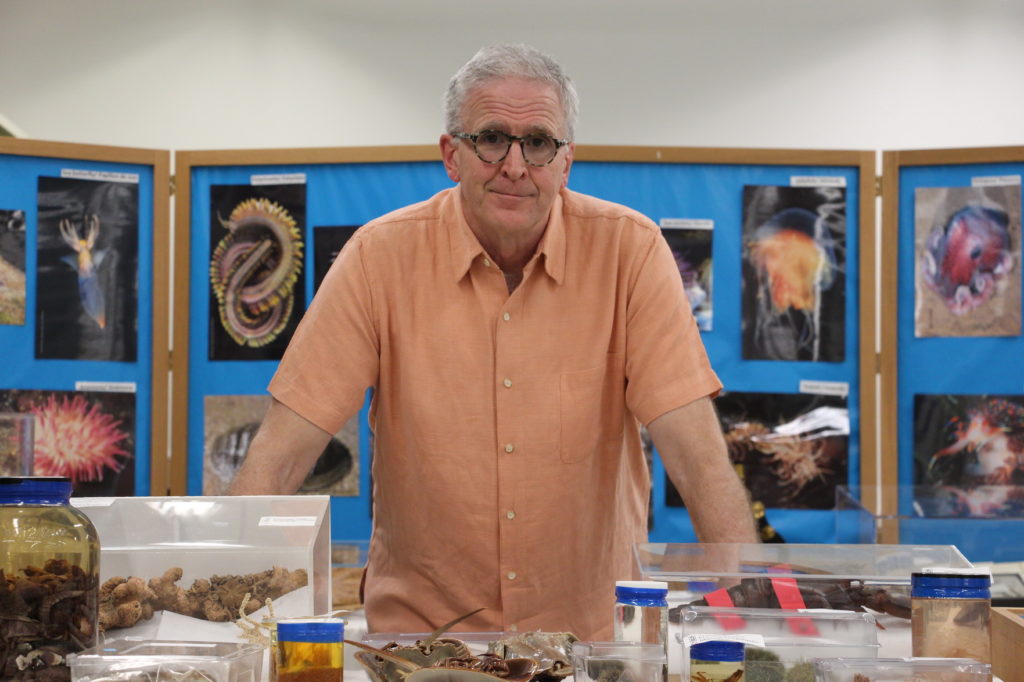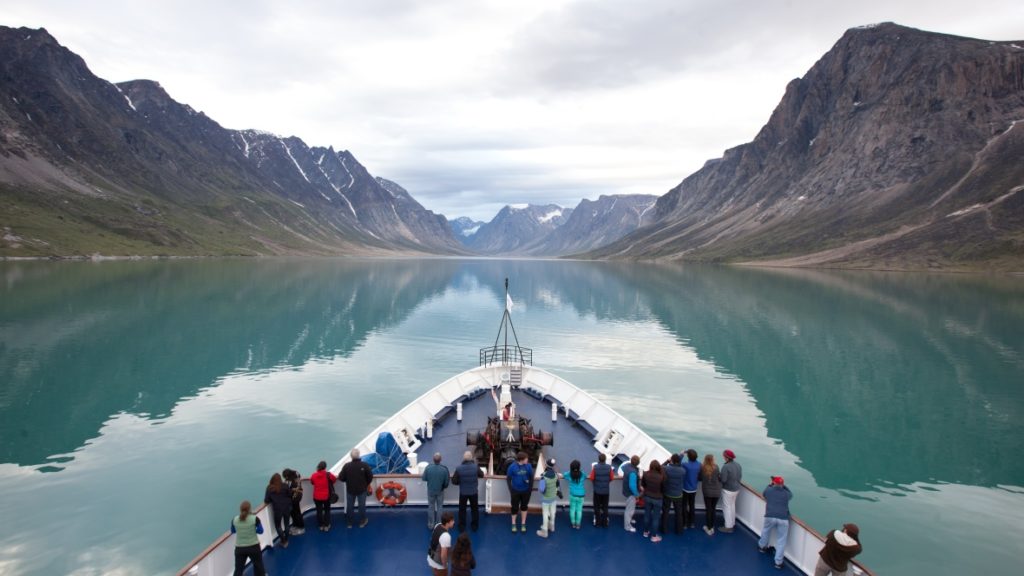The excitement and challenges of science on Canada C3
This article is from the July 2017 issue of Canadian Innovation News. You can read the full issue here.
By Graham Larose
A five-month journey of a lifetime around Canada’s coastlines, Canada C3, began June 1 and the Canadian Museum of Nature is sharing its scientific expertise along the way.
The expedition, which is carrying the flag of The Royal Canadian Geographical Society, is travelling from Toronto to Victoria via the Northwest Passage (see an interactive map here) and is designed around the four key themes of Canada 150: diversity and inclusion; reconciliation; youth engagement; and the environment.
To learn more about the science on this unique project led by the Students on Ice Foundation, the museum sat down with its director of research and collections, Dr. Mark Graham, who is serving as the expedition’s chief scientist.
 Mark Graham, Museum of Nature (Photo: Graham Larose, Canadian Museum of Nature)
Mark Graham, Museum of Nature (Photo: Graham Larose, Canadian Museum of Nature)
Q: What excites you most about Canada C3?
Graham: One of the things that interests me is not only that it spans the Arctic, but also that it goes through the Northwest Passage, which is a historical piece of geography. It’s always been a dream of mine to make that trip. But scientifically, it’s also a chance to make a transect of samples around the country over one season, and I anticipate the resulting data will be very valuable for science.
Q: What are the key areas of focus for the 22 studies being done on the ship?
Graham: They focus on a few thematic areas. The first is surveying coastal biodiversity, but that includes a lot of things. Several projects are looking at wildlife observations, such as birds and mammals that interact with the surface of the ocean. But we also look at terrestrial plants, invertebrates, and micro-algae. Water quality is the second focus. Part of this involves studying underwater sound – not only animal noises but also industrial sounds that could disrupt marine mammals. There will also be assessments of chemical signatures and levels of microplastics in the water. The third focus is looking at invasive species.
Q: Will any new findings come from the expedition?
Graham: A lot of the science is survey work, and so most of these projects are building databases to record the natural history of the marine environment around Canada, especially in the Arctic. We’ll be adding a large amount of oceanographic data, so we’re recording conductivity, temperature, salinity, chlorophyll and oxygen levels in literally hundreds of locations. This will add to what scientists know about how the ocean performs and the chemistry of the oceans around Canada.
[caption id="attachment_11681" align="aligncenter" width="640"] (Photo: Students on Ice)[/caption]
(Photo: Students on Ice)[/caption]
Q: What was one of the biggest challenges in preparing for Canada C3?
Graham: I worked with Roger Bull (the museum’s Coordinator of its Molecular Biodiversity Lab) to create two labs where there were no labs before, and it was a monumental task. Roger spent a week just unpacking and installing equipment. Dalhousie University got some money from the Canada Foundation for Innovation to create a portable lab from a regular shipping container. We also had to order 700 litres of ethanol to store most of the plankton and benthic samples. Logistically it makes your head explode!
Q: Once underway, what are some of the biggest challenges you expect?
Graham: How about the things we can’t plan for, like the weather! We have a beautiful itinerary and it’s timed to the minute because the ship makes so many stops. If everyone has perfect health and the weather is ideal and the ice isn’t too bad and all the equipment works we should be able to sample seven times a leg. But in reality, I am hoping for three to five samples per leg.
Source: Canadian Museum of Nature

This article is from the July 2017 issue of Canadian Innovation News. You can read the full issue here.
| Organizations: | |
| People: |
Events For Leaders in
Science, Tech, Innovation, and Policy
Discuss and learn from those in the know at our virtual and in-person events.
See Upcoming Events
You have 0 free articles remaining.
Don't miss out - start your free trial today.
Start your FREE trial Already a member? Log in
By using this website, you agree to our use of cookies. We use cookies to provide you with a great experience and to help our website run effectively in accordance with our Privacy Policy and Terms of Service.




